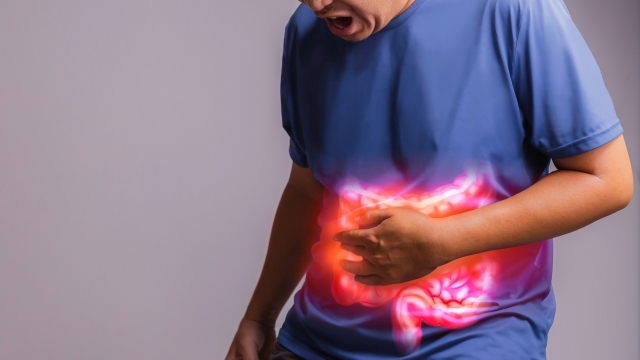No symptoms and rarely abdominal pain... Surgery is recommended if larger than 10mm.
Exercise instead of high-fat, high-calorie diets... Regular health check-ups are important

Recently, with the increased use of abdominal ultrasound examinations for health checkups, the incidence of gallbladder polyps has risen to about 2-9% of the entire population.
The gallbladder is an organ that stores bile produced by the liver. It is located just below the liver, and polyps that develop here refer to all protruding mucosal lesions that rise inward from the gallbladder wall, excluding gallstones.
Gallbladder polyps are broadly divided into non-neoplastic polyps and neoplastic polyps. Non-neoplastic polyps include cholesterol polyps, inflammatory polyps, and adenomyomatosis, while neoplastic polyps include adenomas and carcinomas. Most gallbladder polyps (98%) are non-neoplastic, and among them, more than half are cholesterol polyps. When these are asymptomatic polyps smaller than 10mm, they are typically managed with observation and periodic imaging follow-up without active treatment such as surgery.
Meanwhile, about 3 to 8% of gallbladder polyps are reported to be malignant, and in particular, gallbladder cancer has a 5-year survival rate of only 5%, making its prognosis very poor. Additionally, it frequently metastasizes to surrounding organs and has a high recurrence rate, making complete cure difficult if treatment is delayed. However, if detected early, a cholecystectomy can lead to a cure.
The presence of gallbladder polyps can be relatively easily confirmed through abdominal ultrasound examination, but until tissue examination is performed after surgery, no test can definitively distinguish between benign and malignant. The thickness of the gallbladder wall is about 2mm and contains digestive enzymes, so even a tiny hole can cause the enzymes to leak into the abdominal cavity, leading to peritonitis and threatening life, which is why tissue biopsy is not performed. Therefore, before surgery, the determination of malignancy must rely on radiological methods.
Professor Choi Jung-wan of the Gastroenterology Department at Korea University Ansan Hospital said, "Typically, when a polyp is larger than 5mm and it is uncertain whether it is a cholesterol polyp or a neoplastic polyp, detailed examinations are necessary," and "Adding endoscopic ultrasound, which is superior to abdominal ultrasound in differentiating gallbladder polyps, or abdominal CT/MRI can variously analyze the precise size, number, shape, presence of blood vessels, and layered structure of the gallbladder wall, thereby increasing the accuracy of diagnosing malignant polyps."
Treatment of gallbladder polyps varies depending on the patient's age, symptoms, and the presence of risk factors for gallbladder polyps. The main treatment strategy is to identify and perform early surgery for cases with a high likelihood of malignancy.
Gallbladder polyps generally have few symptoms, but rarely, symptoms such as abdominal pain may occur. If symptoms are present, cholecystectomy may be considered regardless of the size of the polyp, and even if asymptomatic, surgery may be performed based on various diagnostic findings if the size exceeds 10mm.
Even after gallbladder removal, bile produced by the liver is supplied to the duodenum through the bile ducts, so there is little change in digestive function. However, symptoms such as indigestion, fatigue, and diarrhea may occur after surgery, but most of these are temporary and gradually improve.
To prevent gallbladder polyps, it is helpful to avoid high-fat and high-calorie diets and to maintain a balanced diet. Additionally, maintaining your usual weight through appropriate exercise is recommended, and most importantly, regular check-ups are essential for early detection of malignant gallbladder polyps.
Professor Choi stated, "Polyps that are 10mm or smaller and asymptomatic are mostly benign, and they show little change over a five-year follow-up, but some can develop into malignant tumors, so regular check-ups are essential." He emphasized, "Depending on the case, it is important to accurately differentiate tumors through precise examinations such as endoscopic ultrasound in medical institutions with sufficient experience and access to various equipment."